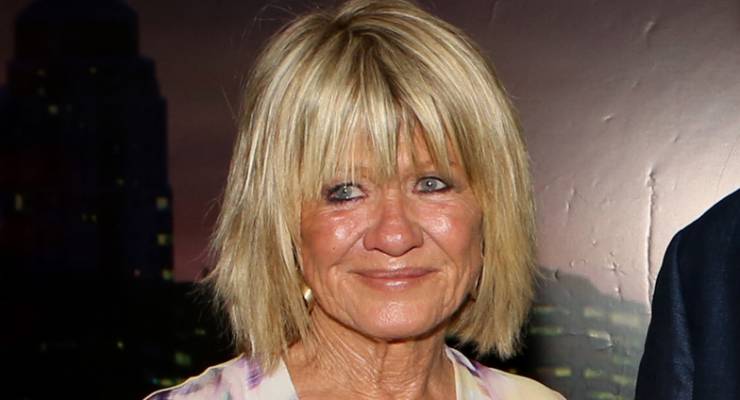
The future of film criticism in Australia is under a cloud, with the number of full-time, salaried critics in the country down to a handful — by some estimates, just two people — in the face of a perfect storm of technological disruption, cratering freelance rates and arts funding cuts.
Coverage of the arts, already a marginal element of the news media, is particularly sensitive to the commercial pressures affecting journalism as a whole.
The last two salaried, full-time film reviewers standing are believed to be Jason Di Rosso at the ABC and Leigh Paatsch at the Herald Sun, whose writing is syndicated across the News Corp network.
Local magazine-turned-website Film Ink employs three critics, although they combine the role with other editorial or publishing tasks.
The rest of Australia’s film reviewing comes from a patchwork of freelancers and contributors, who are sometimes paid very little or asked to work for free.
“What worries me is that a whole middle tier of positions has disappeared,” said Craig Mathieson, a freelance critic for The Sunday Age and its Sydney stablemate The Sun Herald. Mathieson built his profile in the ’90s as a film critic for Rolling Stone Australia and at The Bulletin.
“They were freelance roles with good profile, editorial support and proper word rates,” he said. “These days [those roles] appear to have dried up.”
Whereas once there might have been a market for around 10 to 12 full-time film critics in Australia, the situation is now far bleaker. Fairfax Media no longer employs any dedicated film reviewers on staff at The Age or The Sydney Morning Herald. Schwartz Media retains two novelists as film critics contributing on a freelance basis: Christos Tsiolkas at The Saturday Paper and the newly Oscar-nominated Luke Davies at The Monthly.
Guardian Australia, meanwhile, syndicates reviews from its well-established team of UK and US reviewers, with Luke Buckmaster covering Australian films on a freelance basis. Buckmaster also reviews international releases at Daily Review.
Over at News Corp, The Australian’s longtime critic Evan Williams retired in 2014. David Stratton regularly contributes to the paper, with literary editor Stephen Romei branching into film reviewing, too.
[Meet the critics: Margaret Pomeranz — film reviewing Queen of the teev]
And the ABC, once home to Di Rosso, Julie Rigg and the iconic duo of Stratton and Margaret Pomeranz, is now down to Di Rosso. With the axing of the video gaming program Good Game last week, he is essentially the sole remaining critic of any description on staff at the national broadcaster, although a new “screen”-focused review show is understood to be in development.
As critics compete for a dwindling number of freelance opportunities, concerns are mounting also over what impact the current situation is having on film culture more generally.
The lack of stable job opportunities “creates a situation where nobody has the time or energy to do criticism properly,” according to critic and researcher Lauren Carroll Harris.
“[It] denigrates the entire field, basically.”
Freelance critic Joanna Di Mattia says the environment is “tough for a lot of different reasons”.
Di Mattia, who writes regularly for outlets including SBS Movie, The Big Issue and the Australian Centre for the Moving Image’s blog, made just $3500 from her writing last year.
“There’s so much energy, emotional and physical, that went into making that money,” said Di Mattia, who takes casual shifts at a bookstore to supplement her writing income.
There’s the rejection that comes from failed pitches, unanswered emails to editors, and relationships that are painstakingly built only to crumble instantly once an editor moves on to another job.
“It’s almost like you need to have a trust fund sustaining your development as a critic,” she added.
The status of critics in the broader film ecosystem is changing too, as studios increasingly sidestep them to market films directly to the audience. The official poster for the Christmas release Bad Santa 2, for example, contained pull-quotes taken from moviegoers’ Facebook posts.
Prior to each screening at last year’s Melbourne International Film Festival (MIFF), audiences were treated to a scrolling feed of approved tweets. Those spotlighted came from a mixture of critics, audience members and sponsors.
MIFF artistic director Michelle Carey is upfront about how little the demise of print journalism is affecting festival attendances.
“We’re digital first these days I’m afraid,” she said. “We’re getting less and less coverage in the newspapers but is it affecting us? No. MIFF’s getting more successful every year.”
The festival is wooing emerging critics through its “critics campus” program, now heading into its fourth year (full disclosure: I participated in its first year). The program offers a week’s worth of one-on-one mentoring between emerging critics and more established mentors, with participants’ work published on the festival’s website and in partner organisations like The Age. MIFF’s campus follows the launch of similar programs at several major overseas festivals, including New York, Rotterdam and Locarno.
— Read the rest at Daily Review







Mention should also have been made of longtime reviewers Andrew Urban and Louise Keller, whose website http://www.urbancinefile.com.au/ contains a vast collection of reviews, including an invaluable database of those of Australian films. Sadly they too are shortly giving the game away.
Richard Pennycuick
Where’s Paul Byrne?
Except Margaret Pomeranz they are all pretty shit, so who cares? Blah blah blah journalism is dying, blah blah blah. Look around, its dead, has been for years. Our dickhead PM acts like a 2yo and the media carries on like it means anything.